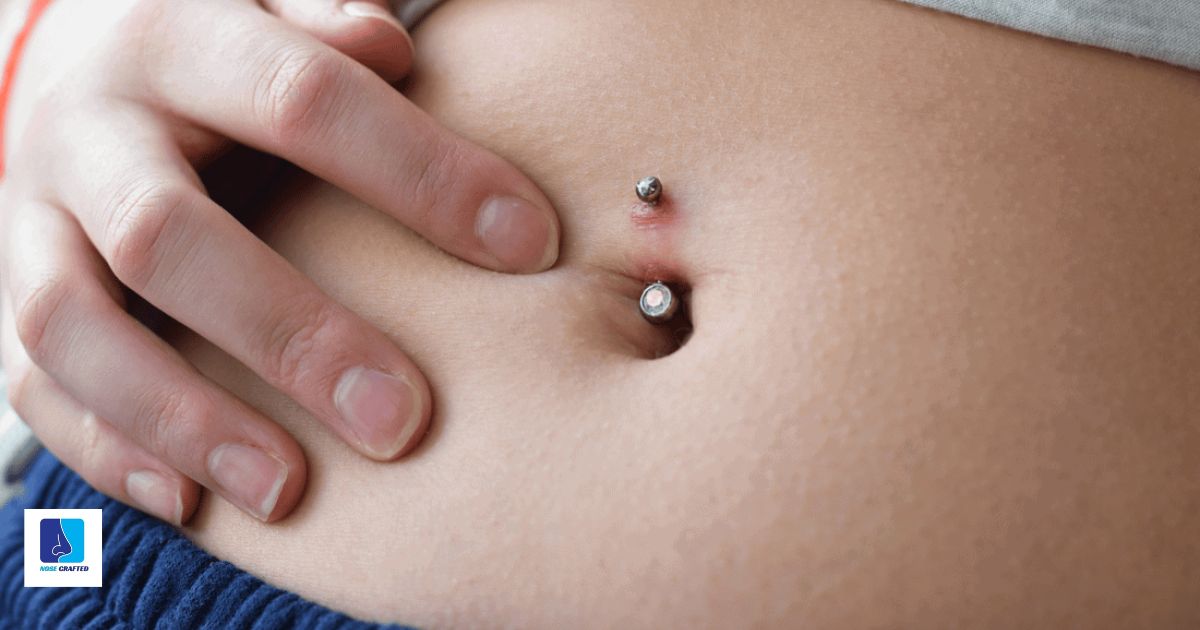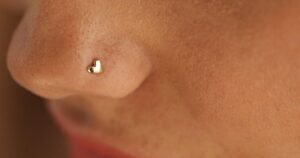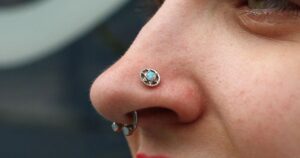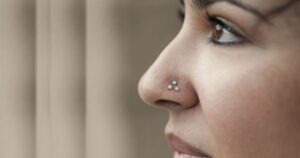Rejecting a piercing occurs when the body begins to push out the jewelry. It can happen due to various reasons like improper piercing techniques or allergies. Symptoms include redness, swelling, and discomfort. Seeking professional help is crucial to prevent complications.
Worried about your piercing? Don’t ignore the signs! Learn how to spot rejection and take action. Your body’s signals shouldn’t be ignored. Discover how to identify and handle piercing rejection before it becomes a problem. Take charge of your piercing’s health today.
If your body is rejecting a piercing, it may show signs like redness, swelling, or discomfort around the piercing site. To confirm rejection, look for the jewelry shifting outward or skin thinning around it. If you suspect rejection, seek advice from a professional piercer or healthcare provider promptly to prevent complications.
Why Do Some Bodies Reject Piercings?
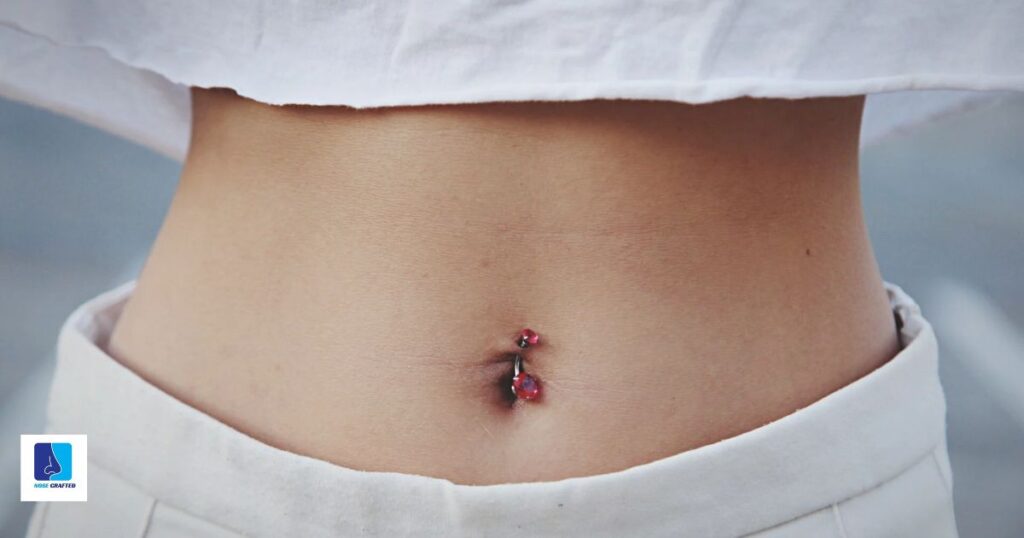
Some bodies reject piercings due to various factors. One reason is improper piercing techniques, such as piercing too deeply or using low-quality jewelry. Allergies to certain metals in the jewelry can also trigger rejection. Additionally, individual body chemistry plays a role; some people naturally have a higher tendency to reject foreign objects. Moreover, neglecting proper aftercare, such as cleaning the piercing regularly, can lead to irritation and rejection.
Furthermore, underlying health conditions or medications may weaken the body’s ability to accept piercings. Stress and hormonal changes can also affect the body’s response to piercings. Ultimately, understanding these factors and ensuring proper piercing procedures and aftercare can reduce the risk of rejection and promote successful healing.
How to Recognize When a Piercing is Being Rejected
Recognizing when a piercing is being rejected is essential for maintaining your piercing’s health. Keep an eye out for symptoms such as persistent redness, swelling, or tenderness around the piercing site. Additionally, if you notice the jewelry appearing to migrate outward or the skin around the piercing thinning, it could be a sign of rejection.
If you suspect your piercing is being rejected, it’s crucial to take action promptly. Consult with a professional piercer or healthcare provider for guidance on how to proceed. They can assess the situation and recommend appropriate steps, which may include removing the jewelry to prevent further complications.
Changes in skin
Changes in skin can occur due to various factors such as aging, exposure to the sun, hormonal fluctuations, or underlying health conditions. These changes may manifest as dryness, wrinkles, dark spots, or acne. Maintaining a healthy skincare routine, staying hydrated, protecting the skin from harmful UV rays, and seeking medical advice for any concerning changes can help preserve skin health and vitality.
Migration
Migration refers to the movement of a piercing away from its original placement due to factors such as improper piercing technique, jewelry size, or the body’s natural healing process. Signs of migration include the piercing appearing shallower or shifting position. To prevent migration, it’s essential to choose the right jewelry size and material and to ensure proper aftercare. If migration occurs, consulting with a professional piercer can help address the issue and prevent further complications.
Prolonged Inflammation
Prolonged inflammation occurs when the body’s immune response persists for an extended period. It can result from various factors such as infection, injury, or autoimmune disorders. Symptoms may include redness, swelling, pain, and loss of function in the affected area. If left untreated, prolonged inflammation can lead to tissue damage and chronic health conditions. Seeking medical attention is essential to address the underlying cause and manage inflammation effectively.
Can You Save A Piercing That’s Being Rejected?
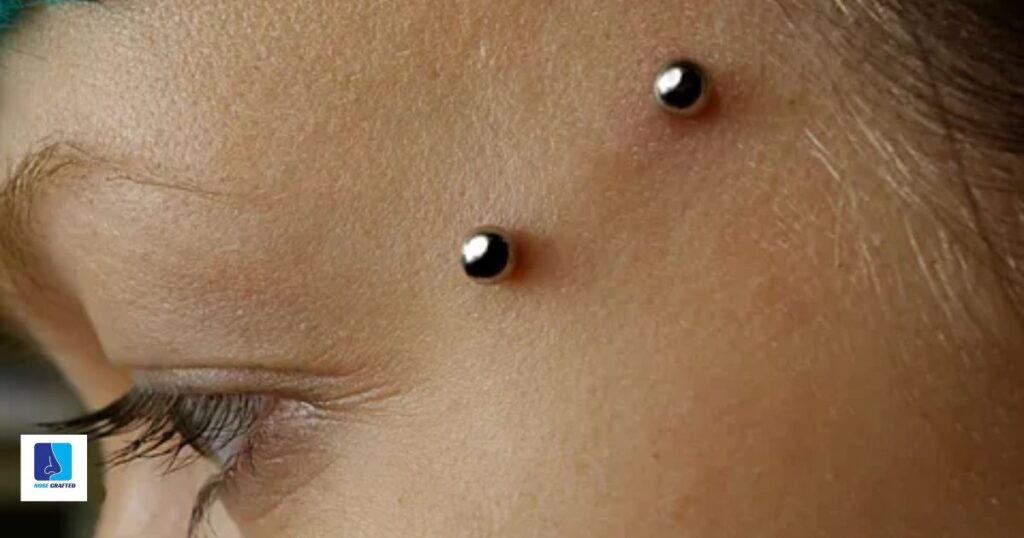
When a piercing begins to reject, it’s essential to act swiftly to potentially salvage it. Firstly, assess the signs of rejection, including redness, swelling, and the jewelry appearing to migrate out of the piercing hole. If caught early, removing the jewelry and allowing the piercing to close might prevent scarring. However, if you wish to save the piercing, consulting a professional piercer is crucial. They may recommend switching to hypoallergenic jewelry or downsizing the jewelry gauge to reduce irritation.
Taking proactive steps can aid in saving a rejecting piercing. After consulting a piercer, follow their advice diligently. Keeping the area clean with saline solution and avoiding excessive movement or trauma to the piercing can help alleviate irritation. Additionally, applying a warm compress can soothe discomfort and promote healing. However, if the rejection persists despite these efforts, it may be best to remove the jewelry to prevent further complications.
Remember, each rejection case is unique, and outcomes may vary. While some rejected piercings can be saved with proper care and attention, others may require removal to prevent infection or scarring. Prioritize your health and consult with a professional piercer or healthcare provider for personalized advice on how to proceed.
How to Prevent Piercing Rejection
Preventing piercing rejection begins with choosing a reputable piercer who follows proper sterilization and piercing techniques. Ensure they use high-quality jewelry made of materials like surgical-grade stainless steel, titanium, or niobium to minimize the risk of allergic reactions. Additionally, opting for a piercing location that suits your anatomy and lifestyle can reduce the chances of rejection. For a more in-depth understanding, explore our Comprehensive Guide to Recognize how to prevent piercing rejection effectively.
After getting pierced, follow the aftercare instructions provided by your piercer diligently. This includes cleaning the piercing regularly with saline solution and avoiding touching it with dirty hands. Refrain from changing the jewelry too soon and steer clear of harsh products like alcohol or hydrogen peroxide, which can irritate the piercing. Lastly, listen to your body—if you notice any signs of rejection such as persistent redness, swelling, or discharge, seek advice from your piercer or a healthcare professional promptly to address the issue before it worsens.
Use a Professional Piercing Artist
Using a professional piercing artist ensures a safe and hygienic experience. These artists undergo extensive training to master proper piercing techniques and safety protocols. Their expertise minimizes the risk of infections, improper placement, and other complications associated with amateur or DIY piercings.
Moreover, professional piercing artists use high-quality, sterile equipment and follow strict hygiene standards. This reduces the likelihood of allergic reactions and ensures a smooth healing process. Trusting a professional ensures not only a beautiful piercing but also peace of mind knowing that your health and safety are prioritized throughout the procedure.
Keep Your Piercing Clean
Keeping your piercing clean is essential for preventing infections and promoting proper healing. Use a saline solution or a mild soap to clean your piercing twice a day, ensuring to rinse thoroughly afterward. Avoid touching your piercing with dirty hands to prevent introducing bacteria. Additionally, avoid swimming in pools, lakes, or oceans until your piercing is fully healed to prevent contamination.
During the healing process, avoid using harsh products like alcohol or hydrogen peroxide on your piercing as they can irritate the skin and delay healing. It’s also crucial to avoid changing your jewelry too soon, as this can disrupt the healing process and increase the risk of infection. Remember to follow any specific aftercare instructions provided by your piercer to ensure your piercing heals properly.
Our Favourite Body Jewelry
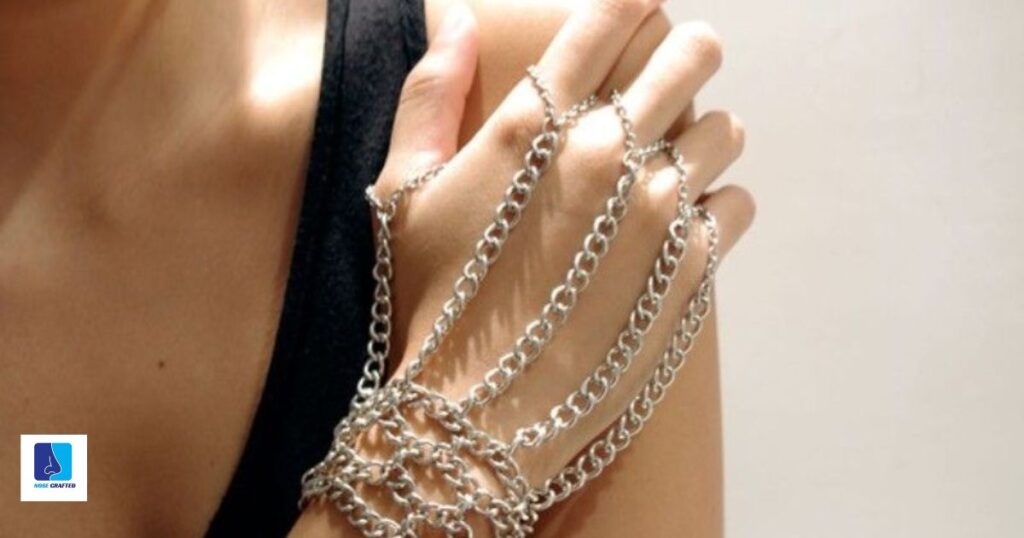
Body jewelry is a fun and expressive way to adorn ourselves, reflecting our individual styles and personalities. From delicate studs to bold statement pieces, there’s something for everyone to love. Whether it’s a simple nose ring, an intricate belly button ring, or a sparkling ear cuff, body jewelry allows us to showcase our creativity and enhance our natural beauty.
Our favorite body jewelry pieces are those that make us feel confident and empowered. They’re the ones that effortlessly complement our outfits and make us stand out in a crowd. Whether we’re dressing up for a special occasion or adding a touch of glamour to our everyday look, our favorite body jewelry pieces are like cherished accessories that accompany us through life’s moments, making each day a little more beautiful.
Consider a Larger Gauge Size
Considering a larger gauge size for your piercing means opting for a thicker piece of jewelry. This choice can provide a bolder look and may reduce the risk of rejection or migration. However, it’s crucial to consult with a professional piercer to ensure it’s suitable for your piercing and to avoid complications. Upgrading to a larger gauge size can enhance both the aesthetics and longevity of your piercing.
Be Healthy
Being healthy means taking care of your body and mind. It involves eating nutritious foods, exercising regularly, and getting enough sleep. Drinking plenty of water and managing stress are also important aspects of maintaining good health. Remember to listen to your body and seek medical help when needed. Prioritizing your health leads to a happier and more fulfilling life.
Find Professional Piercing Artists in Mississauga
Looking for professional piercing artists in Mississauga? You’re in luck! Mississauga boasts a variety of reputable piercing studios known for their expertise and commitment to safety. Whether you’re looking for a simple ear piercing or something more adventurous, you can trust these artists to provide top-notch service in a clean and welcoming environment.
From traditional piercings to avant-garde designs, professional piercing artists in Mississauga offer a diverse range of options to suit your style and preferences. With their extensive experience and knowledge of proper piercing techniques, you can rest assured that you’ll receive the highest quality service and care. So why wait? Take the first step towards your next piercing adventure and discover the best professional artists Mississauga has to offer.
Need an Experienced Piercer in Mississauga?

Looking for an experienced piercer in Mississauga? Look no further! Whether you’re considering a new piercing or need assistance with an existing one, finding a skilled professional is key. With their expertise and knowledge, they can ensure your piercing experience is safe, comfortable, and successful.
An experienced piercer in Mississauga will prioritize your safety and satisfaction. From providing thorough consultations to using high-quality materials and following strict hygiene protocols, they’ll guide you through every step of the piercing process. With their help, you can confidently achieve the piercing you desire, knowing it’s in capable hands.
Conclusion
In conclusion, whether you’re facing piercing rejection or seeking a new piercing experience in Mississauga, professional guidance is essential. Don’t hesitate to reach out to an experienced piercer for assistance and advice. By staying informed about piercing care and listening to your body’s signals, you can ensure a safe and enjoyable piercing journey.
Remember, your health and satisfaction are paramount when it comes to piercings. Trusting in the expertise of a skilled piercer will help you navigate any challenges and achieve the desired results. Embrace the opportunity to enhance your style and self-expression with confidence, knowing you have the support of a knowledgeable professional every step of the way.
